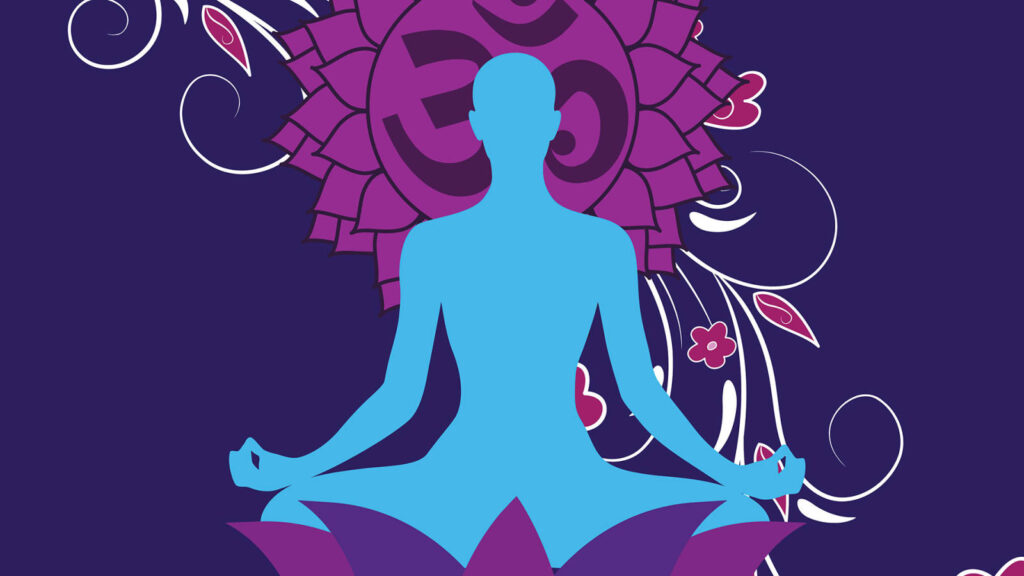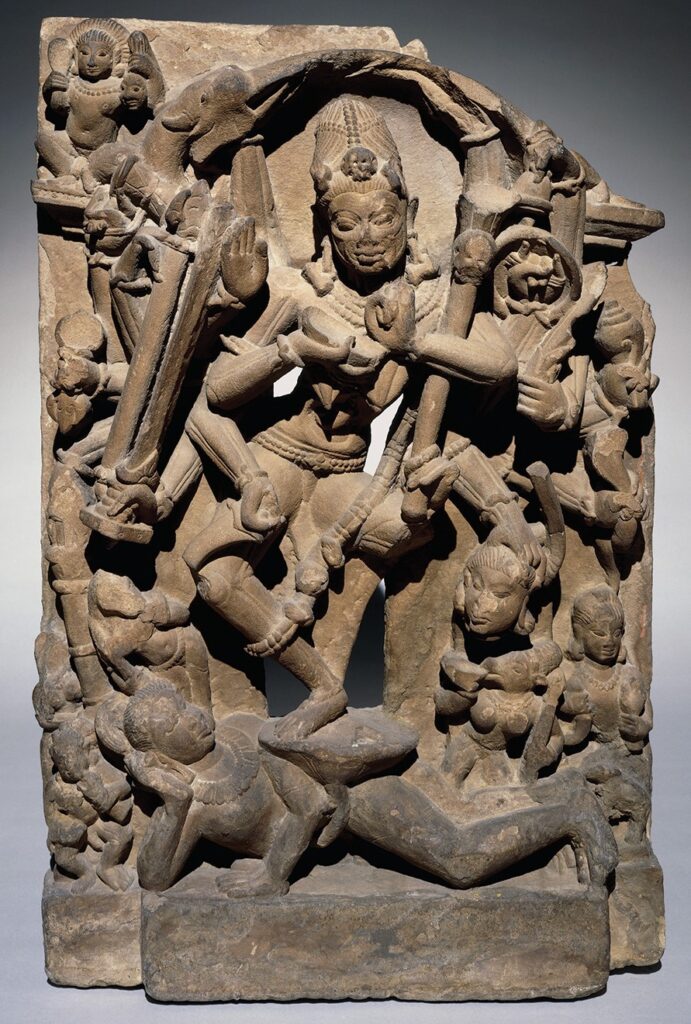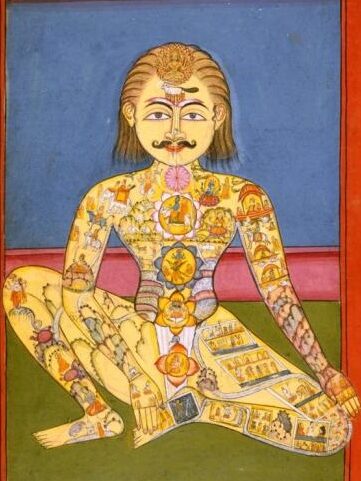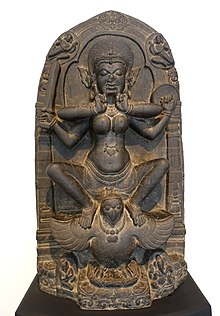Debunking Common Misconceptions and Myths about Tantra Yoga
Tantra Yoga is an ancient spiritual practice that originated in India thousands of years ago. It is a complex system of beliefs, practices, and rituals that have been widely misunderstood and misrepresented in other cultures around the globe. Tantra Yoga is often associated with sex, indulgence, and hedonism, but these stereotypes are far from the truth. In this blog post, we will explore some of the most common myths and misunderstandings about Tantra Yoga and shed light on the true nature of this spiritual practice.
Table of Contents
Myth 1 – Tantra Yoga is All About Sex

Perhaps the biggest misconception about Tantra Yoga is that it is all about sex. While sexuality is a part of Tantra Yoga, it is only a small part of a much larger system of beliefs and practices. Tantra Yoga is primarily a spiritual practice that aims to help individuals attain enlightenment or self-realization.
In Tantra Yoga, sexuality is viewed as a sacred and natural part of life that can be used to help individuals reach higher levels of consciousness. Sexual energy is seen as a powerful force that can be harnessed and directed toward spiritual growth and transformation.
Tantra Yoga is not just about sex. It encompasses a wide range of practices including meditation, chanting, visualization, breathwork, and yoga asanas. The aim of these practices is to purify the body and mind, balance the energy centers or chakras, and cultivate a deeper connection with the divine.
Myth 2 – Tantra Yoga is Only for Couples
Another common misconception about Tantra Yoga is that it is only for couples or those in a romantic relationship. While Tantra Yoga can be practiced with a partner, it is not limited to couples. In fact, Tantra Yoga can be practiced alone or in a group setting.

Tantra Yoga is a holistic system that encompasses all aspects of life. It is about cultivating a deeper understanding and connection with oneself, others, and the universe. Tantra Yoga teaches individuals how to develop a loving and compassionate attitude toward themselves and others.
In Tantra Yoga, the concept of union or oneness is central. This union can be achieved through a variety of practices, including meditation, yoga asanas, and breathing exercises. The aim of these practices is to harmonize the body, mind, and spirit, and to cultivate a sense of unity with all beings.
Myth 3 – Tantra Yoga is a Cult or a Secret Society
Tantra Yoga has been portrayed in popular culture as a secretive and exclusive practice that is only accessible to a select few. This is far from the truth. Tantra Yoga is an ancient spiritual practice that has been passed down through generations of teachers and practitioners or Guru- Shishya Parampara.

Tantra Yoga is not a cult or a secret society. It is a spiritual practice that is open to anyone who is interested in exploring the deeper aspects of life. Tantra Yoga is not about blindly following a guru or a leader. Instead, it encourages individuals to cultivate their own inner wisdom and intuition.
Myth 4 – Tantra Yoga is Dangerous or Can Lead to Harm
There have been reports of individuals who have practiced Tantra Yoga and experienced negative consequences. These reports have led some people to believe that Tantra Yoga is dangerous or can lead to harm.

It is true that Tantra Yoga can be a powerful practice that can bring up deep-seated emotions and traumas. However, when practiced under the guidance of a Guru or qualified teacher, Tantra Yoga is a safe and effective practice.
In Tantra Yoga, the importance of the teacher-student relationship is emphasized. The teacher is responsible for guiding the student through the practice and ensuring that the student is practicing in a safe and appropriate way.
Myth 5 – Tantra Yoga is Only for the Spiritually Advanced
This myth is not entirely true. While it’s true that Tantra Yoga can be a challenging practice that requires dedication and discipline, it is not only for the spiritually advanced.
Tantra Yoga is a practice that aims to help individuals connect with their true selves and their higher consciousness. It involves various physical postures, breathwork, meditation, and other techniques to awaken the dormant energy within us and help us achieve a state of spiritual bliss.

However, Tantra Yoga can be practiced by anyone regardless of their level of spiritual advancement. In fact, it can be a powerful tool for those who are just starting their spiritual journey, as it provides practical and effective methods for transforming negative emotions, thoughts, and behaviors into positive ones.
Like any other yoga practice, Tantra Yoga requires patience, dedication, and discipline. But with regular practice, anyone can reap the benefits of this ancient practice and experience profound spiritual growth and transformation.
Myth 6 – Tantra Yoga is a Religion
To address the misconception that Tantra Yoga is a religion, it is important to explain that Tantra is not a religion, but a spiritual practice or a way of life. Tantra does not require any belief in a particular deity, and it is not associated with any particular religion.

Tantra Yoga is a practice that seeks to awaken the spiritual energy within the individual and promote a sense of unity with the universe. It is a holistic practice that encompasses physical, mental, and spiritual elements, and it draws on a variety of traditions, including Hinduism, Buddhism, and Jainism.
It is important to emphasize that Tantra Yoga is not in conflict with any religious tradition, and practitioners of all faiths can benefit from its teachings. The focus of Tantra is on personal growth and transformation, rather than adherence to any particular religious dogma.
To address the misconception that Tantra Yoga is a religion, it can be done by providing examples of how Tantra Yoga can be practiced by people of all faiths and backgrounds, and by highlighting the ways in which Tantra can help individuals to achieve a greater sense of peace, joy, and fulfillment in their lives.
Myth 7 – Tantra Yoga is Only for Men
Tantra Yoga is a spiritual practice that is open to people of all genders, ages, and backgrounds. It is not limited to any specific gender or demographic.
In fact, Tantra Yoga recognizes and honors the divine feminine as an essential aspect of spiritual growth and transformation. Tantra Yoga seeks to balance and harmonize the masculine and feminine energies within individuals, as well as in the universe at large.

Historically, women have played important roles in the practice and development of Tantra Yoga. From Vedic ages till now in Tantric traditions, women have held positions of spiritual authority and have been revered as teachers, mystics, and embodiments of the divine feminine.
It is important to emphasize the inclusive and non-discriminatory nature of the Tantra yoga practice. This can be done by providing examples of women who have played significant roles in the history of Tantra Yoga, as well as highlighting the importance to create safe and welcoming spaces for women and other marginalized groups to practice Tantra Yoga without fear of discrimination or exclusion.
Myth 8 – Tantra Yoga Requires Extreme and Dangerous Practices
Some aspects of Tantra Yoga may involve challenging physical postures, breathing techniques, and meditation practices, these are not inherently dangerous or harmful if practiced under the guidance of a qualified teacher.
It is important to note that the extreme and dangerous practices associated with Tantra Yoga are often sensationalized in popular media and may not accurately reflect the true nature of the practice. In fact, Tantra Yoga is a holistic approach to spiritual growth that emphasizes balance, harmony, and self-awareness.

Tantra Yoga encourages practitioners to approach their practice with patience, self-care, and respect for their own physical and emotional limits. It also stresses the importance of cultivating a deep connection with one’s inner self, rather than focusing solely on external experiences or sensations.
To clear the misconception, it is important to provide accurate information about the nature of the practice and to emphasize the importance of working with a qualified teacher who can guide practitioners in a safe and effective manner.
Myth 9 – Tantra Yoga is All About Achieving Supernatural Powers
The myth that Tantra Yoga is all about achieving supernatural powers is not accurate. While Tantra Yoga does acknowledge the existence of subtle energies within the body and the universe, its ultimate goal is not to attain supernatural powers but rather to achieve liberation or moksha.
Instead, Tantra Yoga seeks to cultivate awareness, self-realization, and a deep sense of connection with the universe. Through the practice of Tantra Yoga, individuals can develop a greater understanding of their own inner nature and the nature of the universe as a whole.

While some Tantric practices may involve visualization, mantra chanting, and other techniques that are designed to access subtle energies within the body and the universe, these practices are not intended solely to achieve supernatural powers. Rather, they are used as tools for self-transformation and spiritual growth.
It can be helpful to provide examples of how Tantra Yoga can be used to cultivate awareness, compassion, and self-realization, as well as to highlight the ways in which the practice can benefit individuals in their daily lives. By doing so, we can help to dispel the notion that Tantra Yoga is a practice focused solely on achieving supernatural powers.
Myth 10 – Tantra Yoga is a Shortcut to Enlightenment
The myth that Tantra Yoga is a shortcut to enlightenment is not true or not a quick fix or a shortcut to enlightenment.
Enlightenment is a state of profound spiritual awakening that requires dedication, discipline, and a deep commitment to personal growth and transformation. While Tantra Yoga can provide valuable insights and practices for individuals on the path to enlightenment, it is not a guarantee of achieving this state.

Tantra Yoga emphasizes the importance of engaging in spiritual practice with patience, perseverance, and self-awareness. It encourages practitioners to cultivate a deep connection with their inner self, rather than seeking external validation or quick fixes.
To address the myth that Tantra Yoga is a shortcut to enlightenment, it is important to emphasize the holistic and gradual nature of the practice. It can be helpful to provide examples of how Tantra Yoga can be used to cultivate patience, discipline, and self-awareness, as well as to highlight the ways in which the practice can support individuals on the path to spiritual growth and transformation.
Myth 11 – Tantra Yoga is Incompatible with Other Spiritual Practices
Tantra Yoga is a distinct spiritual path, it can be practiced in conjunction with other spiritual practices and traditions. In fact, Tantra Yoga is known for its inclusive and integrative approach to spirituality, which emphasizes the unity of all things and the interconnectedness of different spiritual paths.
Tantra Yoga encourages practitioners to seek out and explore different spiritual traditions, and to integrate the insights and practices they gain from these traditions into their own spiritual path.

It is important to note that while Tantra Yoga is compatible with other spiritual practices, it does have its own unique practices and philosophies. It is important to approach the practice of Tantra Yoga with an open mind and a willingness to learn, rather than trying to force it into preconceived notions or frameworks.
It is important to emphasize the inclusive and integrative nature of the Tantra Yoga practice. This can be done by highlighting the ways in which Tantra Yoga can complement and enhance other spiritual practices, as well as by providing examples of individuals who have successfully integrated Tantra Yoga into their own spiritual path.
Myth 12 – Tantra Yoga is Only Practiced in India
Tantra Yoga originated in India and has strong roots in Indian culture and spirituality, but experiencing the benefits it has spread throughout the world and is now practiced in many different countries and cultures.
In recent years, Tantra Yoga has gained popularity in the West, with many individuals seeking to explore the practice and integrate its insights and techniques into their own spiritual path. There are now Tantra Yoga teachers and practitioners in many different countries, including the United States, Canada, Europe, and Australia.




While the practice of Tantra Yoga may vary somewhat depending on the culture and context in which it is practiced, its core principles and techniques remain the same. Tantra Yoga emphasizes the cultivation of awareness, self-realization, and a deep connection with the universe, regardless of where it is practiced.
Tantra Yoga highlights the global nature of the practice and the diverse communities of practitioners have embraced it. There are so many examples of individuals and communities who have successfully integrated Tantra Yoga into their own cultural and spiritual traditions, as well as to emphasize the universal principles and techniques that underlie the practice.
Myth 13 – Tantra Yoga is a Secret and Mysterious Practice

The myth that Tantra Yoga is a secret and mysterious practice is not completely accurate. While Tantra Yoga has historically been associated with secrecy and mystique, much of this reputation is due to misunderstandings and cultural stereotypes.
In reality, Tantra Yoga is a practice that is accessible to anyone who is willing to learn and put in the effort to cultivate awareness and self-realization. While there may be certain esoteric practices and teachings associated with Tantra Yoga, these are not meant to be shrouded in secrecy or inaccessible to the average practitioner.
In fact, many Tantra Yoga teachers and practitioners today are working to demystify the practice and make it more accessible to a wider audience. There are now numerous resources available to individuals who are interested in learning about Tantra Yoga, including books, online courses, and workshops.
Conclusion
To address all the myths and misconceptions of Tantra Yoga it is important to emphasize the accessibility and openness of the practice. This can be done by providing information about the core principles and techniques of Tantra Yoga, as well as by highlighting the many resources available to individuals who are interested in learning more about the practice.
References
- Banerjee, Sures Chandra (1988). A Brief History of Tantra Literature. Kolkata: Naya Prokash.
- Bagchi, P.C. (1989). Evolution of the Tantras, Studies on the Tantras. Kolkata: Ramakrishna Mission Institute of Culture. ISBN 978-81-85843-36-0. Second Revised Edition
- Bhattacharyya, N. N. (1999). History of the Tantric Religion. New Delhi: Manohar. ISBN 978-81-7304-025-2. Second Revised Edition
- Sharma, D. S. (1990). The Philosophy of Sadhana. State University of New York Press. ISBN 978-0-7914-0347-1.
- Avalon, Arthur (1914). Principles of Tantra: the Tantratattva of Shriyukta Shiva Chandra Vidyarnava Bhattacharyya Mahodaya. London: Luzac & Co.
- Padoux, André (2017). The Hindu Tantric World An Overview. Chicago: University of Chicago Press. ISBN 978-0226424095.
- https://isha.sadhguru.org/us/en/wisdom/article/about-tantra-yoga
